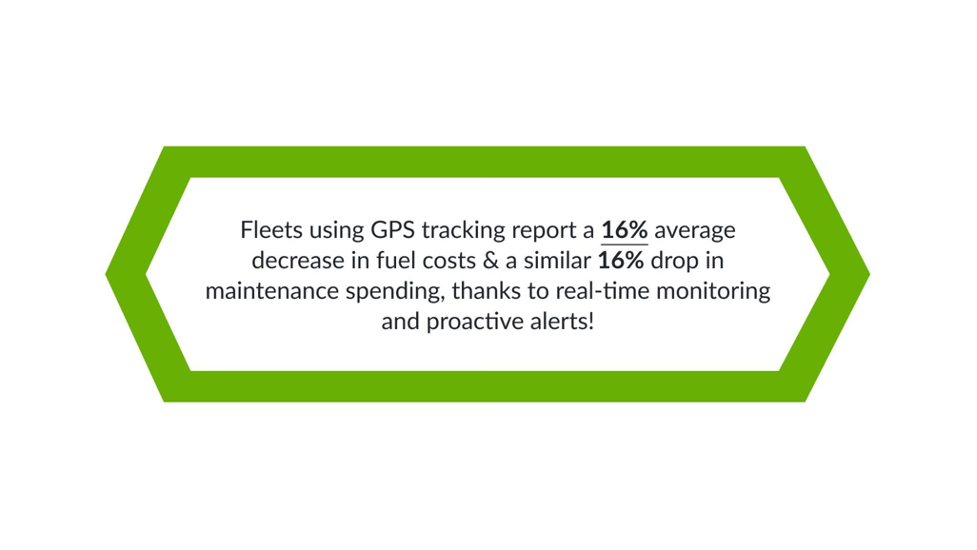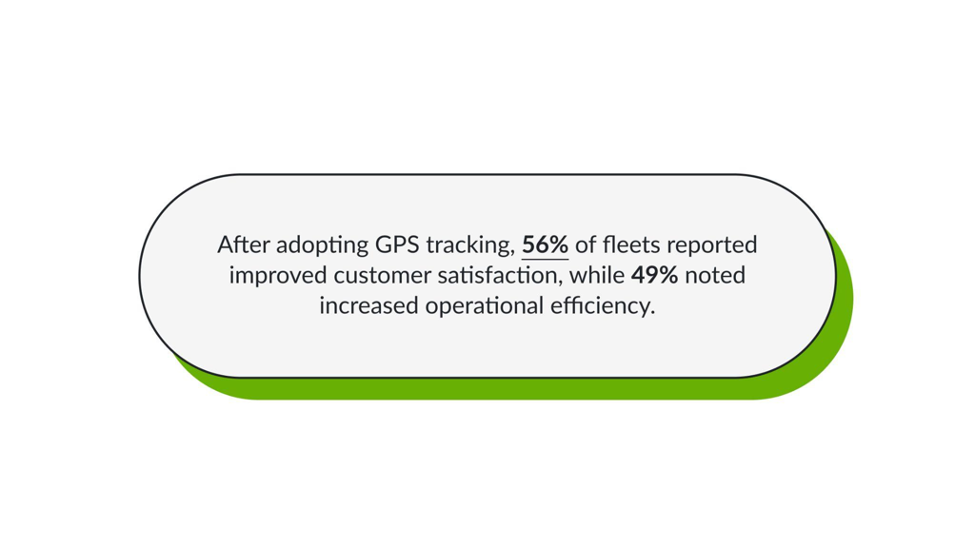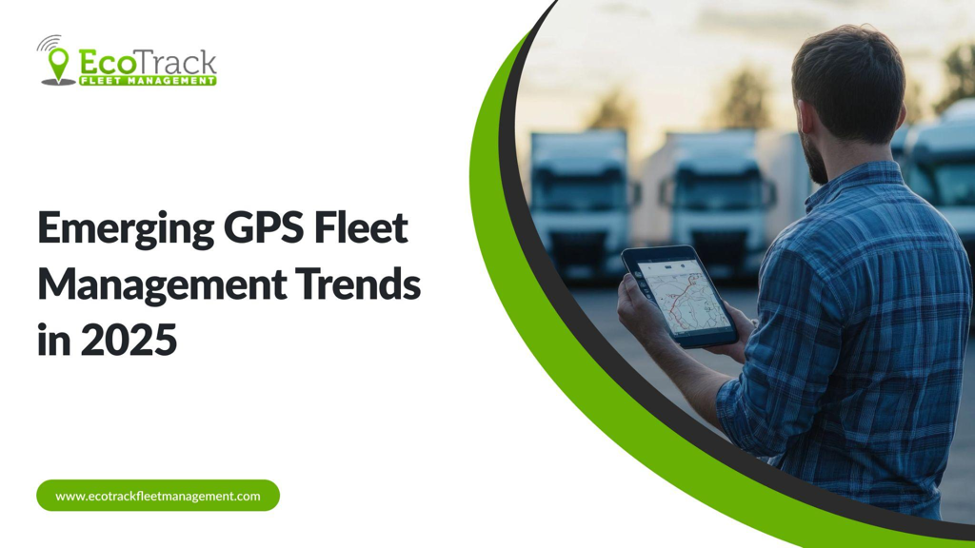Imagine this: A delivery truck is stuck in unexpected traffic, the dispatcher has no real-time updates, and the customer keeps calling for an ETA. Without accurate visibility, delays accumulate, fuel is wasted, and trust suffers. This is the reality for fleets still relying on outdated systems in 2025.
That’s where RTLT (real-time location tracking) comes in, reducing costs and creating a greener footprint.
At EcoTrack Fleet Management, we believe that sustainable and efficient fleet management is no longer optional; it’s imperative. Our all-in-one platform provides real-time GPS tracking, smart routing and dispatch, driver monitoring, heavy equipment tracking, remote temperature visibility, and digital driver logs. These tools ensure that every mile driven adds value instead of waste.
In this blog, we’ll explore why real-time tracking is now a must-have for fleets in 2025, the technology trends powering it, and how EcoTrackFleet helps businesses stay ahead with eco-friendly, future-ready solutions.
What Is Real-Time Location Tracking?
Real-time location tracking for drivers involves using GPS technology, smart sensors, and telematics to track vehicles’ movements in real time. Unlike traditional methods, this technology provides continuous updates, enabling fleet managers to monitor progress and make informed decisions quickly.
EcoTrack’s real-time location tracking for drivers includes features such as driver routing, smart cameras, remote temperature monitoring, and electronic driver logs. These tools provide you with complete visibility, from vehicle locations to driver behavior, enabling you to optimize operations and comply with regulations.
Benefits of Real-Time Location Tracking in 2025
![]()
For service fleets, every minute on the road matters. Customers expect on-time arrivals, technicians need efficient schedules, and managers must control operating costs while ensuring team safety. RTLT brings all of this together into one decisive advantage.
Operational Efficiency & Productivity
With driver routing and dispatch, service calls can be assigned to the nearest available technician, thereby reducing response times and minimizing unnecessary mileage. Real-time visibility enables dispatchers to adjust schedules instantly in response to traffic, cancellations, or emergency jobs, ensuring customer satisfaction and team productivity.

Cost Savings & Sustainability
Tracking vehicles in real-time helps reduce fuel usage and idle time. By ensuring efficient routes and avoiding unnecessary detours, real-time location tracking for drivers helps fleets reduce operational costs and lower their carbon footprint.
Driver Safety & Accountability
Technicians spend long hours on the road, and safety is a top priority. With smart GPS monitoring of driving behavior, managers can address speeding, harsh braking, or distracted driving before accidents occur. Real-time alerts help keep drivers accountable and supported.
Customer Experience & Transparency
Few things matter more to service customers than reliability. Live GPS updates allow businesses to provide accurate ETAs, while remote temperature tracking ensures sensitive tools or materials arrive in proper condition. This builds trust and strengthens long-term client relationships.

Compliance & Reporting
Real-time location tracking for drivers also simplifies compliance by automating driver logs. This ensures accurate record-keeping for hours of service, vehicle maintenance, and route optimization, all without extra paperwork.
In 2025, service fleets that use real-time tracking are positioned to deliver faster, safer, and greener results, giving them a clear edge over competitors still running on outdated systems.
Technology Trends Driving RTLT in 2025
In today’s time, real-time location tracking for drivers isn’t just about basic GPS. It’s integrated with next-gen technology to create smarter, more efficient fleets.
1. 5G Connectivity and IoT Integration
Ultra-fast 5G networks enable real-time updates to be instant, even in busy city zones or remote service areas. Combined with IoT sensors, service fleets can monitor everything from engine health to tool usage in real-time, eliminating delays. For example, HVAC technicians can be rerouted in seconds to handle urgent calls.
2. AI-Powered Predictive Insights
Artificial intelligence is changing fleet management. Instead of reacting to problems, service fleets can predict them, whether it’s suggesting faster routes based on historic traffic or warning about a van that’s due for maintenance. With EcoTrack Fleet, AI-driven routing and monitoring cut downtime and maximize technician availability.
3. EV Readiness and Sustainable Routing
More service businesses are adopting electric vans and vehicles. Real-time tracking, integrated with EV data, helps monitor battery health, plan charging stops, and maintain reliable schedules. EcoTrackFleet ensures service fleets stay eco-friendly while meeting customer demands.
4. Cloud Dashboards and Mobile Access
Cloud integration enables fleet managers to access real-time location tracking for drivers through mobile apps, allowing them to manage their fleets from anywhere. Whether in the office or on the go, fleet management is always within reach.
5. Seamless Integration with Business Tools
APIs enable EcoTrackFleet to integrate with scheduling systems, customer relationship management tools, or invoicing software. This creates one streamlined workflow where job assignments, tracking, and customer updates happen seamlessly.
By embracing these technology trends, service fleets don’t just track drivers; they unlock smarter operations, eco-friendly practices, and stronger customer trust.
How Does EcoTrackFleet Support Service Fleets
EcoTrackFleet’s comprehensive platform provides real-time location tracking for drivers, ensuring service fleets operate efficiently, safely, and sustainably. Here’s how our features support your business:
- Real-Time GPS Tracking: Fleet managers always know the location of their technicians, reducing wasted time and enabling better coordination across multiple jobs in a single day.
- Driver Routing and Dispatch: Jobs can be assigned to the nearest available technician, enabling businesses to respond more quickly to urgent calls and minimize delays caused by traffic or last-minute schedule changes.
- Smart Cameras: Driver behavior is monitored in real-time, encouraging safe habits on the road and providing managers with visibility into potential risks before they escalate into bigger issues.
- Heavy Equipment Tracking: Expensive tools and service equipment are protected from theft or misuse. Managers can also confirm equipment is at the right job site, preventing costly interruptions.
- Remote Temperature Tracking: Service vehicles carrying sensitive materials, such as refrigerants, medical supplies, or electronics, can be monitored to ensure proper storage conditions throughout the journey.
- Electronic Driver Logs: Automated logging of routes and hours reduces paperwork, improves accuracy, and ensures compliance with service industry regulations.
With these solutions working together, EcoTrackFleet helps service fleets operate with greater control, safety, and customer trust, without adding unnecessary complexity (or external equipment in many cases) to daily operations.
Implementation Guide for Service Fleets
Adopting real-time location tracking may feel like a big step, but with the right approach, service fleets can transition smoothly and start seeing immediate benefits. Here’s how to get started with EcoTrack Fleet Management:
1. Assess Your Fleet Needs
Begin by identifying the specific challenges your service fleet faces, whether it’s missed appointments, lack of visibility, rising fuel costs, or compliance requirements. This will help prioritize which EcoTrackFleet tools to activate first.
2. Deploy Real-Time GPS and Dispatch Tools
Install GPS trackers in vehicles and enable driver routing and dispatch. This ensures dispatchers can assign jobs to the nearest technician and reroute instantly when schedules shift.
3. Enhance Safety and Accountability
Integrate smart cameras and electronic driver logs to monitor driving behavior and maintain accurate records without adding paperwork to technicians’ workloads.
4. Track Equipment and Sensitive Materials
Activate heavy equipment tracking for valuable tools and remote temperature monitoring for materials that require specific storage conditions. These safeguards reduce risk and protect investments.
5. Train Your Team
Provide training for managers and technicians on how to use EcoTrackFleet’s dashboard and mobile tools. Simple onboarding ensures everyone benefits from the new system from day one.
6. Monitor and Optimize
Use EcoTrack’s reporting tools to review routes, driver performance, and equipment usage. Over time, these insights can inform smarter scheduling, reduce fuel consumption, and enhance customer service.
By following these steps, service fleets can transition from reactive management to proactive, data-driven operations, turning everyday challenges into opportunities for growth and efficiency.
Or, if you’d like guided 360-degree support, simply request a demo!
Future Outlook: Fleet Tracking Beyond 2025
The future of service fleets extends far beyond simply knowing a vehicle’s location. As cities grow smarter and sustainability becomes a priority, real-time location tracking will evolve into a central tool for building efficient, eco-friendly service operations.
- Smarter Cities and Infrastructure: Real-time tracking will integrate with city traffic systems, enabling fleets to automatically avoid congestion zones, use priority lanes, or comply with low-emission area regulations.
- Electric Vehicle (EV) Growth: More service companies are shifting to electric vans and trucks. Fleet platforms will support EV monitoring, tracking battery health, charging stops, and energy efficiency to keep technicians on schedule.
- AI-Driven Service Optimization
Artificial intelligence will move beyond routing to predict demand. Imagine knowing which neighborhoods will need HVAC repairs during a heatwave and dispatching technicians proactively. - Enhanced Sustainability Reporting: Tracking platforms will tie directly into sustainability goals, providing automated reports on fuel saved, emissions reduced, and eco-driving improvements, helping companies meet ESG targets with ease.
- Autonomous and Semi-Autonomous Service Vehicles: As automation advances, service fleets may one day deploy driverless support vehicles that deliver tools or parts directly to technicians on-site, coordinated through tracking platforms like EcoTrackFleet.
For service fleets, adopting real-time tracking in 2025 isn’t just about solving today’s challenges. It’s about preparing for a future where efficiency, sustainability, and innovative technology define success.
Experience Real-Time Tracking That Saves You Time, Money & Stress with EcoTrack Fleet
Running a service fleet in 2025 isn’t just about reaching job sites; it’s about doing it smarter, safer, and more sustainably. That’s where EcoTrack Fleet steps in.
With real-time location tracking for drivers, predictive analytics, and seamless data integration, EcoTrackFleet gives you more than fleet visibility; it gives you clarity to act in real time:
- Smarter Dispatching: Assign the nearest technician and reroute in seconds.
- Cost Control: Reduce fuel waste, prevent equipment misuse, and cut idle time.
- Safer Roads: Use live driver insights and smart cameras to encourage safe habits.
- Compliance Made Simple: Automate driver logs and reporting with ease.
- Eco-Friendly Operations: Track routes and optimize for efficiency to reduce emissions.
EcoTrackFleet ensures your service fleet is not just on the road, but always moving in the right direction.
Book your free demo today and see how real-time location tracking can transform your service fleet.



